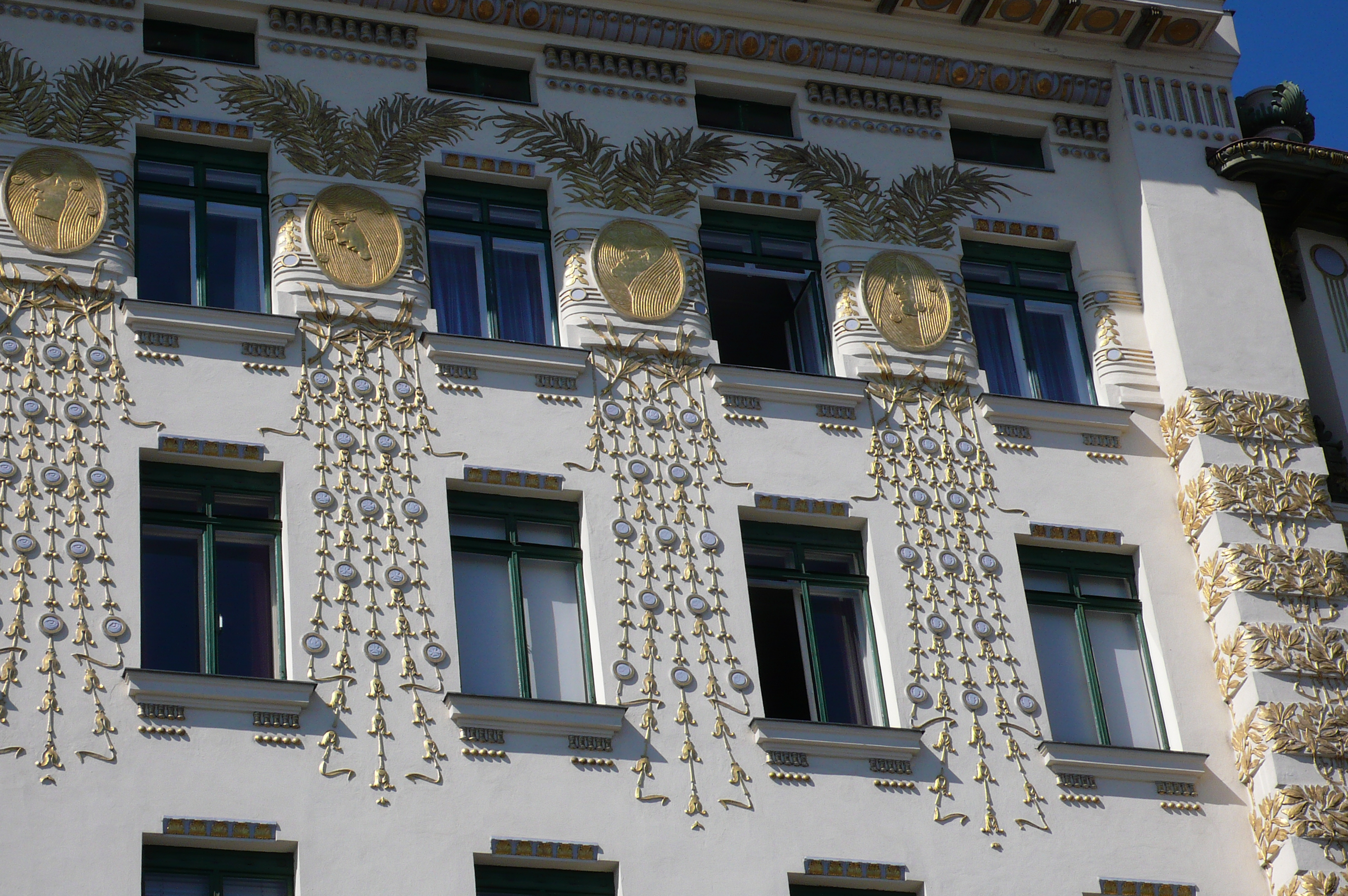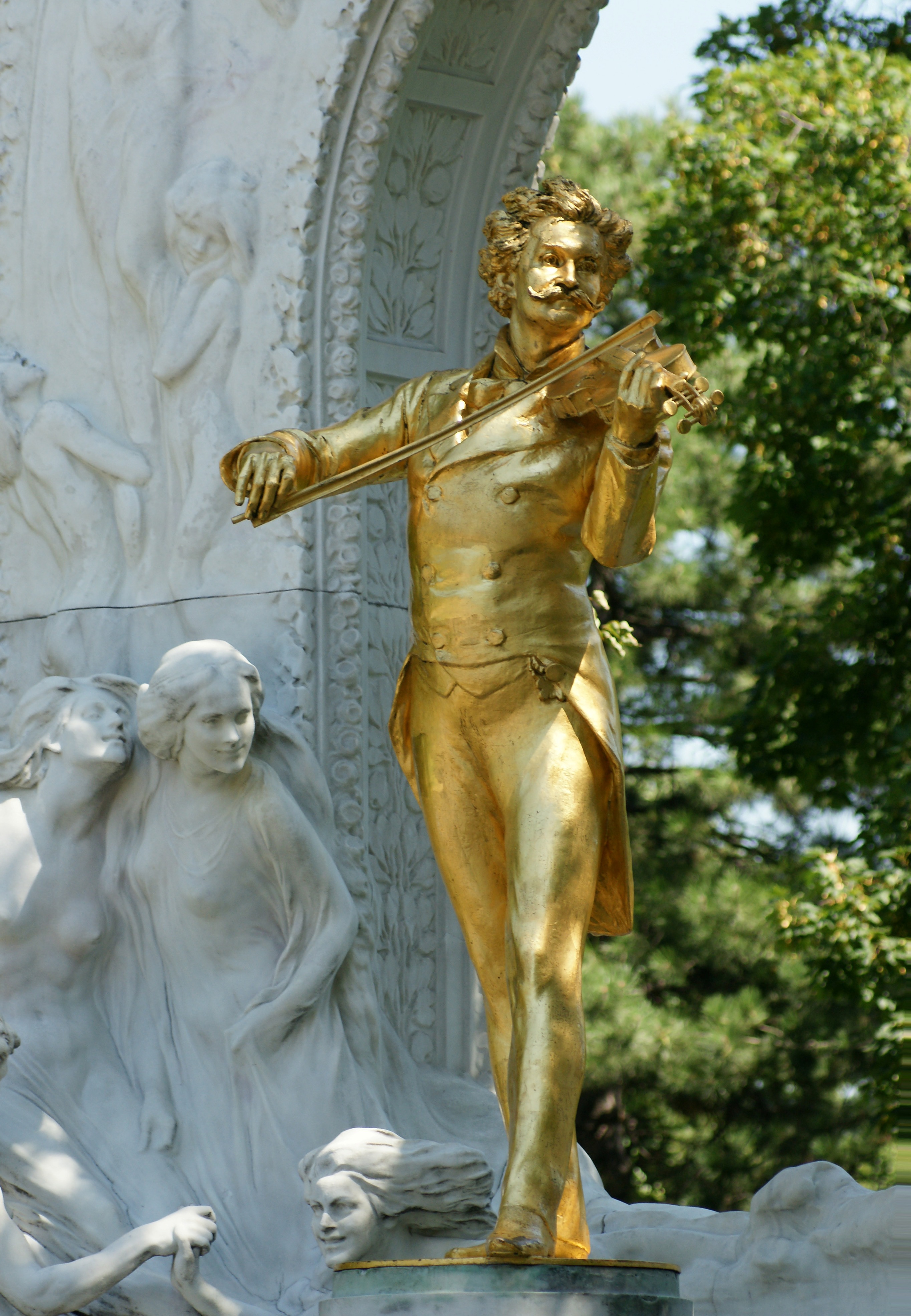Sculptor Bruno Gironcoli claimed his own place among the prestigious sculptors, architects and painters who made their golden marks on Vienna. For Adolf Loos, author of the essay “Ornament and Crime” (1908), a stroll through ornamentation-obsessed Vienna at the turn of the century must have been hard to bear.
In the Austrian capital the most magnificent buildings, which had been commissioned by Emperor Franz-Joseph I in the mid-19th century, all stand on the Ringstrasse, which runs to almost five and a half kilometers in length. Some frills here, some gilding there: Historical building shapes and types such as the Hellenistic temple were translated into the present day, idealized, and adorned with all manner of embellishment.
The tendency towards decorative façade design continued in the years that followed, during which the Vienna Secessionists defined the artworld. Alongside the Secession’s exhibition building, which the Viennese dubbed – affectionately, one hopes – the “Krauthappel” or “cabbage head”, the Viennese ribbon developments by Otto Wagner, embellished with vegetation-inspired golden details courtesy of Koloman Moser, come to mind in particular. A man of many talents, Moser is not only now considered the first ever graphic designer but also mastered all fields of the applied arts and painting.

Decor by Koloman Moser, Image via wikimedia.org
His aspiration to influence every aspect of life is reflected in the idea of the “Gesamtkunstwerk” – the ultimate endeavor of the Secessionists. Particularly remarkable are his prints, which found favor in the parlors of the Viennese gentry as furniture upholstery and decorative fabrics. His designs and patterns are so timeless and varied that they are still in demand today. When it comes to the link between Vienna and gold, one name invariably comes to mind: Gustav Klimt. The son of an engraver and goldsmith is primarily known to the world for the paintings from his Golden Phase. By gilding the background, he made use of a technique that had arisen in religious and iconographic art.

Gustav Klimt, Portrait of Adele Bloch-Bauer, 1907, Image via wikimedia.org
His works, however, focused on women, presenting them as erotic and unobtainable sacred objects. The bold use of the precious metal in the form of golden coloring and gold leaf, which were applied extensively and offered no more than a hint of depth and three-dimensionality, helped to emphasize the timeless quality of the new Viennese woman who represented the focus of his art.
The resistance already arose during the erection of the monument
Klimt’s works are now among the most coveted in the world. The portrait of Adele Bloch-Bauer I (1907) was sold to an American businessman in 2006 for the record sum of 135 million dollars – the highest price ever paid for a painting at that time. Although it is almost 15 years younger than the afore-mentioned portrait, the Johann Strauss monument by Edmund Hellmer appears by comparison like a greeting from a bygone era. Opposition to the statue already arose as it was erected, since the Viennese saw the depiction of the “The Waltz King” as outdated.

Edmund Hellmer, Johann Strauß monument, Image via wikimedia.org
The protests even led to its gilding being completely removed in 1935. The sculpture of Johann Strauss regained its original shine in 1991, however, and has been a popular tourist destination in Vienna’s Stadtpark ever since. Less well known but all the more curious is the enormous gold orb of the Spittelau waste incineration plant north of the city. Following a fire and the subsequent explosion in the middle section of the building complex, the commission for the redesign of the façade was awarded to no less a person than Friedensreich Hundertwasser.
For Hundertwasser it was a symbol for a better world
A native of Vienna, the environmentalist and artist (who rejected any form of standardization and called for architecture that could be realized in harmony with the laws of nature) had an enormous gold sphere erected at the top end of the plant’s chimney. For Hundertwasser, this was a symbol of a better world: The functional, austere utility building had given way to a work of art, which simultaneously represented a harmonious symbiosis of art, ecology and technology. With the connection between art and technology, we have come full circle, since Gironcoli’s monumental sculptures, which are permanently exhibited in the so-called Gironcoli-Kristall at the STRABAG Kunstforum in Vienna’s Donaucity, among other venues, reflect precisely this fusion.

Waste incineration plant Spittelau , Image via pinimg.com

Bruno Gironcoli at the STRABAG Kunstforum, Image via www.strabag-kunstforum.at
The surreal, machine-like objects nevertheless also borrow from the ornamental building design of Historicism and Art Nouveau, while their gold, silver and copper surfaces are reminiscent of the flat, gold background of a Gustav Klimt. That said, Gironcoli chose to use a more affordable oven spray paint coating for his sculptures rather than gold leaf. Perhaps Bruno Gironcoli first had to process the glistening, glittering and grand works of his Viennese predecessors in order ultimately to be able to produce a fascinating aesthetic and design language of his own.
